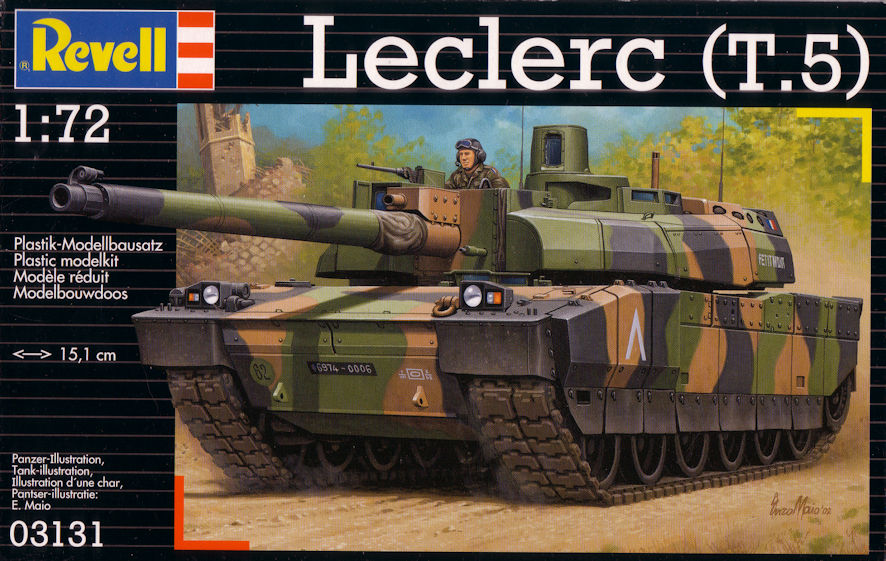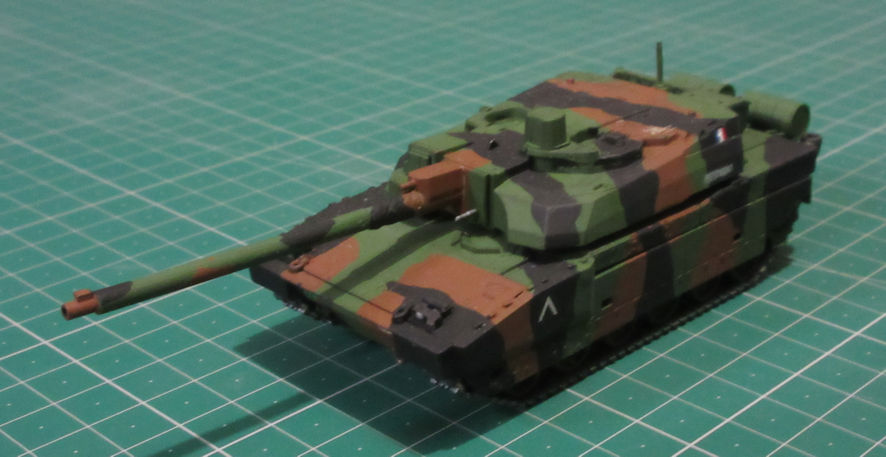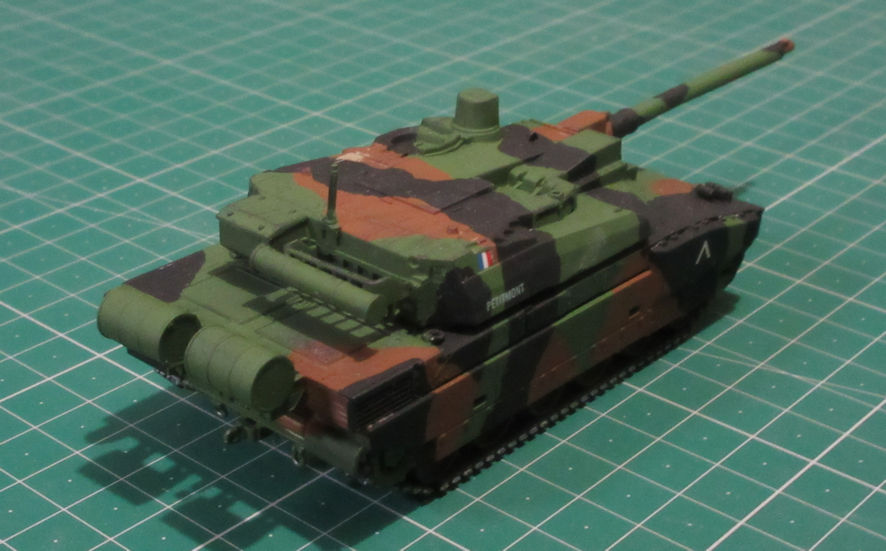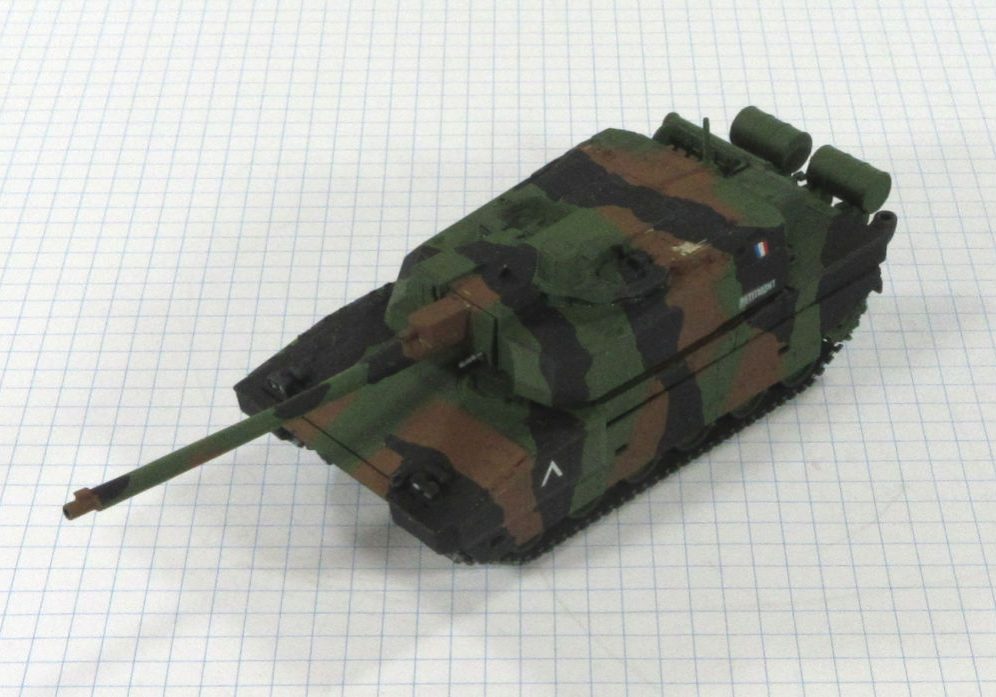By the 1970s the French AMX-30 Main Battle Tank was becoming obsolete and in 1977 the French Army drafted requirements for a new Engine Principal de Combat to replace it. New tanks like the M1 Abrams, Leopard 2 and Merkava were studied to see if they could fill the role but were rejected. Then a joint program with Germany, based on the Leopard 2, failed to materialize so, in 1979, studies for development of an indigenous French MBT commenced. Unlike other western designs, the French placed a higher priority on active rather than passive protection that would limit the weight of the tank and give it the mobility to evade incoming fire, so particular design attention went into the fire control and defensive systems.
The French Army had a requirement for 426 of the new tanks so partnership was sought with a foreign nation to reduce the cost per unit. The United Arab Emirates joined the project and placed an order for 390 vehicles, bringing the total planned production run to over 800 vehicles. The new tank was named Leclerc after General Philippe de Hautecloceue ‘Leclerc’ who landed at Normandy and led the drive towards Paris while in charge of the Free French 2nd Armoured Division.
The project got under way in 1986 with six prototypes that were quickly constructed. Mass production commenced in 1990 with a first batch of four tanks that were used mainly for comparative tests in foreign countries. Subsequently two further batches of 17 tanks each were produced with improvements, based on experience gained from the previous batches.
The French Leclercs were produced in a total of ten batches. Faults found in earlier versions were rectified and improved systems were incorporated into new batched. Batches 4 and 5 eliminated problems in the power plant, batch 6 added a climate control system in the right rear of the turret, batch 7 introduced improved transmission and fire control systems, batch 8 a modernized electronic system and batch 9 an improved thermal imaging system. In 2005 the process of upgrading all previous batches to batch 9 standard commenced. Production of the 10th batch began in 2004 with improved information systems and new armour. By 2007 the French Army planned to have 320 of its Leclercs in service in four regiments, each with 80 Leclercs.
The United Arab Emirates Leclercs have several significant differences, most of them in the operating systems. The most important difference is the installation of a German MTU 883 diesel engine that is more reliable than the French engine but has led to a lengthening of the engine compartment. The driving and turret functions are completely automated for use by crews with only basic training, a mechanical climitization system to cool the tank without the use of electrical current which could reveal the tank’s position, and different night vision, navigation and communications systems.
The Leclerc entered service with the French Army in 1992, too late to take part in the 1991 Gulf War, and it has not seen service in full scale warfare. Fifteen Leclercs were deployed to Kosovo in the UN peacekeeping force and their performance there was judged to be satisfactory. Another 13 Leclercs were deployed in south Lebanon in another peacekeeping role.

I’m not much into tank kits but I have to admit that the boxes that Revell put their tank kits in are very attractive. Despite this, I have resisted the various temptations that have come my way to pay money for these kits because, after all, I don’t make tank kits. The only small exception is French tank kits so, when I saw a Revell kit of a Leclerc, I was able to spend a small amount of money without feeling guilty so I could finally find out about the quality of the kits that lie within those boxes. And what I found was very acceptable, as good as the new kits of things like the Hawker Hunter, the Breguet Atlantic and Heinkel He177 aeroplanes that Revell have also released and I did splash out on. If it were not for the fact that I don’t make tank models it would be tempting to invest in a few more.
The mouldings are lovely and crisp, the instruction sheet is a model of what such a sheet should be and the decal sheet, what there is of it, is of the same quality. There are, so far as I can see, two basic parts to a tank kit, the top part and the bottom part. The top part has the hull top and the turret and the bottom half has all the rest, including the running gear. Like modern tanks, the Leclerc has hefty skirt protection so there really isn’t much to see of the road wheels, sprockets and all that other stuff that makes tank models so disagreeable to make, so really most of it could be left out. For me the most intriguing part of the kit was the fact that the tracks came in several parts of track moulded together and then a few links to join the various long bits going around the rollers or sprockets.
Assembly was straight forward and relatively painless. Everything goes where it is supposed to go and fits perfectly, although I amused myself by opening up some of the periscopes to be later filled with some kristal kleer. I made the model in the two parts with the intention of joining them together at the end of the process. The top part went well, as did the bottom part for the most. I painted it all the approved shade of green, painted the tyres of the road wheels dark grey, as you do, painted the tracks an appropriate metallic shade and waited for it all to dry.
Then we came to the process of sticking the tracks to the running gear. NOW I recall why I don’t make tank models! Give me the old vinyl tracks any day; they may have their problems but they don’t drive you mad. Little bits of plastic sticking to your fingers, sticking to the tweezer, falling on the floor, attracting the attention of the cat, going everywhere but that tiny little place where they are supposed to go.
Let’s pass over this sad passage in my life and come to the concluding part where everything is finally in place, painted in the three colour camouflage with the finishing flourish of the tiny decals. It looks pretty good, even for a tank.


Leigh Edmonds
February 2007
